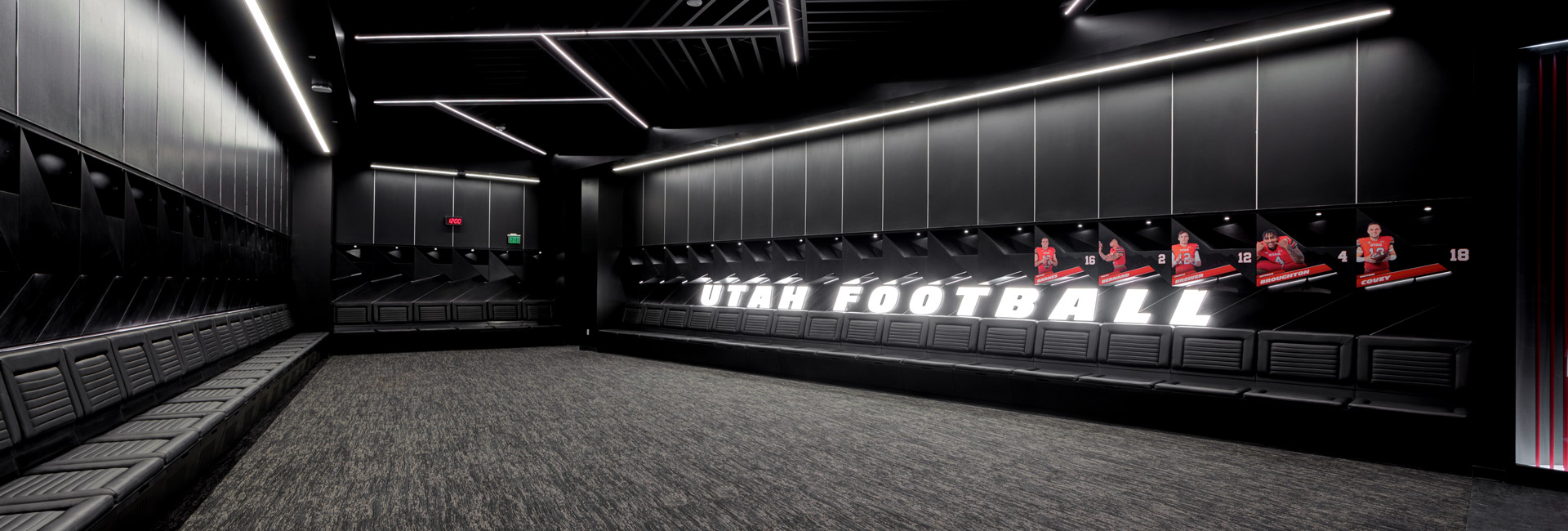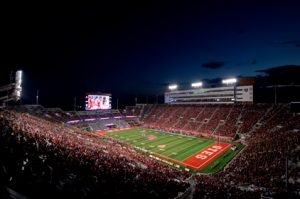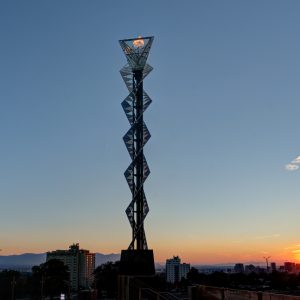FOR THE WIN: Layton Finishes University of Utah Rice-Eccles Stadium for Football Season
On September 2, 2021, the University of Utah Utes took the field in the first football game of the season. The players and coaches exited their new state-of-the-art locker room and ran into the newly expanded Rice-Eccles Stadium in front of the largest audience to date, made possible by the Ken Garff Red Zone and premium suites that increased the capacity of the stadium by 5,637 seats. The Utes battled the Weber State Wildcats and beat them 40–17.

What the 5,637 fans sitting in those new seats, and the thousands of other fans at the game, didn’t know is that the Rice-Eccles Stadium expansion project had already won a serious battle of its own against time and a worldwide pandemic.
With the deadline of the 2021 football season looming, the Rice-Eccles Stadium expansion had a hard deadline. Of course, Layton Construction, subcontractors, architects, and the university auxiliary and athletic departments anticipated the normal challenges of an endeavor this size. However, almost immediately, the project faced overwhelming odds.

THE 19-YARD PENALTY
At the end of 2019, Layton broke ground on the project; during the first few months of 2020, work on a 35ft-high, 400ft-long radius wall began. In March of 2020, the pandemic hit, and with it came numerous problems, including 80 days of delays due to unforeseen conditions. COVID-19 and the subsequent delays were nearly an insurmountable hurdle for the stadium project. At all times, 20% of the staff were out with COVID-19. With these unexpected delays, 90% of the work had to be completed within nine months. Making up this time while managing the impacts of COVID was a massive undertaking, which required 12-hour days, 6 to 7 days a week. “The burnout was the bigger issue,” says Layton vice president Joshua Haines. “How do you try and stay safe when you’re working those kinds of hours?”
Due to the pandemic, the project also faced problems with materials shortage. Wisely, when COVID-19 hit the United States, Layton foresaw issues with material procurement and ordered everything they needed for the job. This was not always easy, says Haines. “It was difficult to predict which materials would be impacted next, so our approach was to push procurement across the board.” For example, the anti-vehicle granite barriers being made in India, could not be fired before shipment as usual, due to their fragility. India’s surge in COVID-19 cases created an oxygen shortage that prevented firing. Waiting to ship the granite would mean a major delay in completion. So, Layton made the unconventional choice to ship the granite and have it fired in the United States, a decision that ensured the project stayed on track.
THE PLAYBOOK
Lead times on materials were a perpetual issue. Often, materials had to be sent via air freight to combat the delays in the ports. All the while, COVID-19 kept rearing its head. The home team lockers were being built in St. Louis and were scheduled for delivery in late June, leaving a small window for delays. There was a COVID-19 outbreak in the factory, pushing manufacturing and delivery back a month. When the first shipment of lockers was finally delivered on July 26, four out of the five members of the install team had tested positive for COVID-19. For two weeks, the one remaining team member worked with laborers provided by Layton on locker installation. Haines asserted the importance of this type of flexibility throughout the project. “We needed to be incredibly flexible and durable and creative to come up with new strategies around every challenge that popped up,” he says.

THE GOLD MEDAL WAY
One such challenge was removing the 2002 Olympic Winter Games cauldron from outside the stadium to make room for the new bleachers. At each step, Layton confronted challenges and overcame them: they removed rusted 20-year-old bolts, found the original hexagonal rings for transport, built a tent at the airport to house the cauldron temporarily, removed 738 glass panes and used over 2,500 metal clips to permanently secure the glass. After nearly a year, the Olympic Cauldron was returned to its new home and now rests upon a 25ft pedestal with a waterfall, positioning Salt Lake City as a potential future Olympics host.
In many ways, the pandemic created division, but on the Rice-Eccles Stadium expansion, it created unity.
Haines says, “We couldn’t use the normal processes. Everything had to be fast-tracked, so it was a lot more of working one on one. We really gelled as a team, which was extraordinarily helpful because neither side wants to let the other side down. From a team perspective, it was just fun to work with them.”
Thanks to the combined efforts of Layton staff, architects, subcontractors, and the University of Utah Athletics Department and Auxiliary Services, the Rice-Eccles Stadium expansion project beat the odds, and the first Ute football game of the season went off without a hitch.
